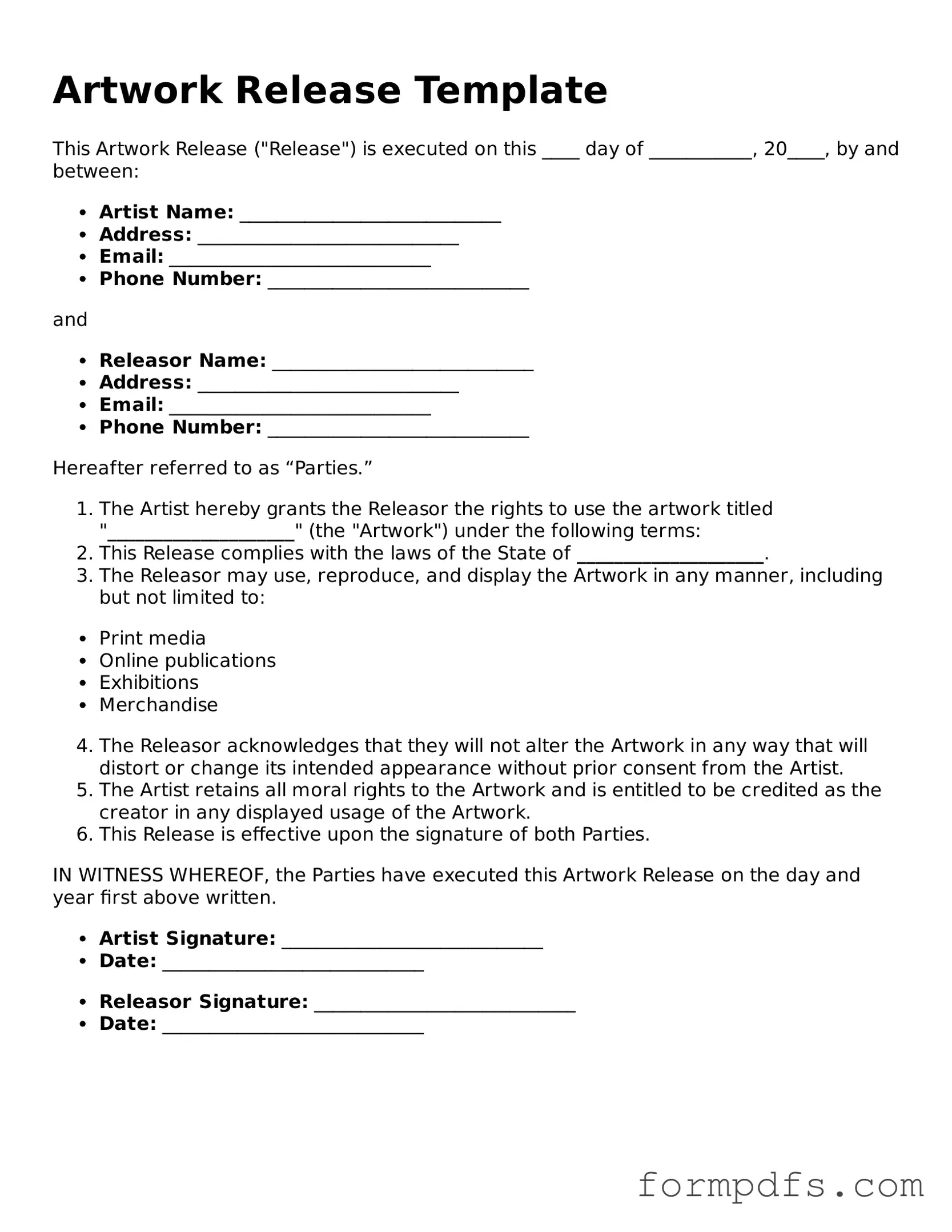What is an Artwork Release form?
An Artwork Release form is a legal document that allows an artist or creator to grant permission for their artwork to be used by another party. This could include reproduction, distribution, or display of the artwork in various formats. It ensures that the rights of the artist are protected while allowing others to use their work legally.
Who needs to sign the Artwork Release form?
The Artwork Release form must be signed by the artist or creator of the artwork. Additionally, the party wishing to use the artwork should also sign the form. This creates a mutual agreement between both parties regarding the use of the artwork.
What information is included in the Artwork Release form?
The form typically includes details such as the names of the artist and the party using the artwork, a description of the artwork, the specific rights being granted, and any limitations on the use of the artwork. It may also outline compensation or royalties, if applicable.
Is the Artwork Release form legally binding?
Yes, once both parties sign the Artwork Release form, it becomes a legally binding contract. This means that both parties are obligated to adhere to the terms outlined in the document. If either party fails to comply, the other may have legal grounds to seek enforcement.
Can the Artwork Release form be revoked?
Generally, once the Artwork Release form is signed and the rights are granted, the artist cannot revoke those rights unless there is a specific clause in the agreement allowing for revocation. It’s important to read the form carefully and understand the terms before signing.
Do I need a lawyer to create an Artwork Release form?
While it is always a good idea to consult with a lawyer, especially for complex agreements, many artists and creators can use a standard Artwork Release form template. These templates can often be customized to fit specific needs, making it easier to create a valid agreement without legal assistance.
What happens if I don’t use an Artwork Release form?
If you don’t use an Artwork Release form, you risk losing control over how your artwork is used. The other party may use your work without permission, which can lead to disputes or unauthorized use. Having a formal agreement helps protect your rights as an artist.
Where can I find an Artwork Release form?
Artwork Release forms can be found online through various legal document websites. Many offer free templates that you can download and customize. Be sure to choose a reputable source to ensure the form is valid and meets your needs.
